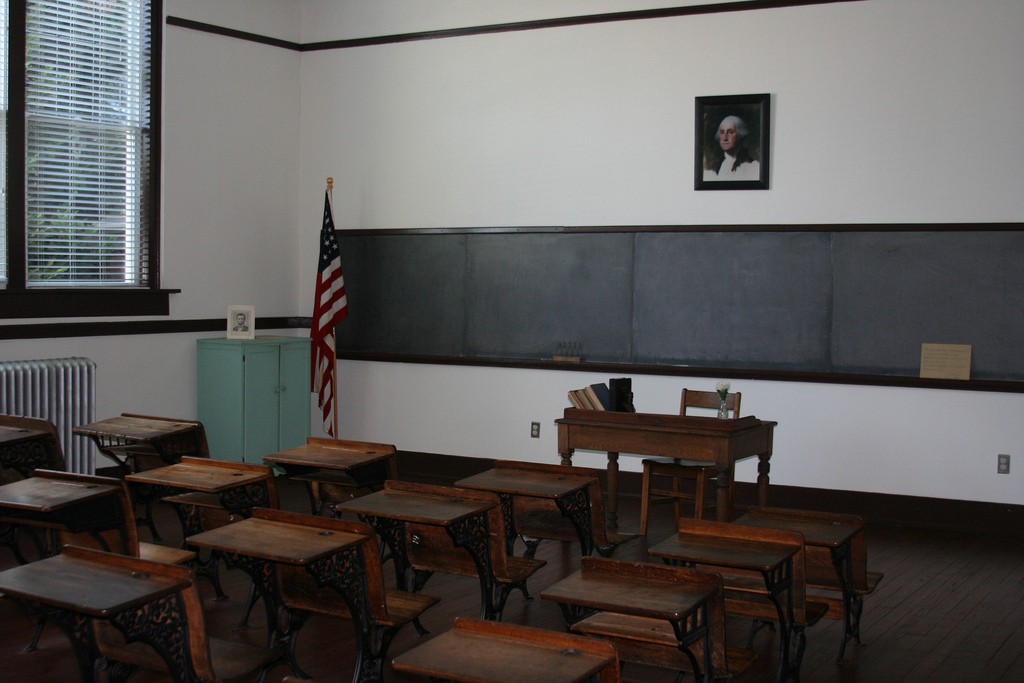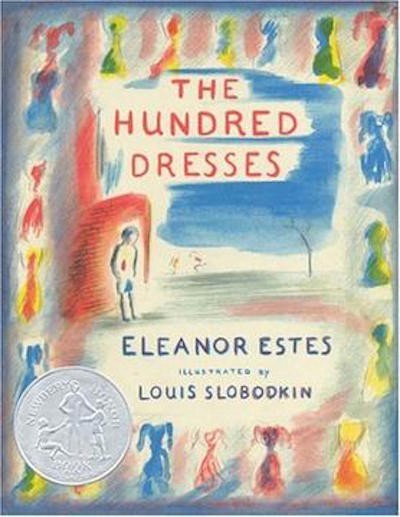What Children’s Literature Teaches Us About Money: Eleanor Estes’ ‘The Hundred Dresses’

After I wrote about Ramona Quimby and money for Beverly Cleary’s 100th birthday, Team Billfold requested that I reflect on other children’s literature classics, beginning with Eleanor Estes’ The Hundred Dresses.
I want to start with what I remember about The Hundred Dresses, which means it’s probably what I took from this story when I was a child:
Two girls make fun of a poor girl who says she owns 100 dresses. It turns out that she has 100 drawings of dresses. Two of the hundred drawings look like the two girls who made fun of her, and the two girls feel bad because that meant the poor girl just wanted to be their friend.
Takeaway: don’t make fun of people, don’t assume people are lying, do make friends with people.

It turns out that The Hundred Dresses is about all of that—my remembered plot summary isn’t wrong—but it’s also about money and class, and who fits into the “middle class” and who doesn’t. (It’s also about gender, in a really interesting way.)
Estes opens her story by explaining that Wanda Petronski, a Polish child from an (assumed) immigrant family, sits in the back of the classroom with “the rough boys who did not make good marks on their report cards” because she comes to school every day with muddy shoes. Then she introduces Maddie, the character through whom we see nearly all of the story:
But on Wednesday, Peggy and Maddie, who sat in the front row along with other children who got good marks and didn’t track in a whole lot of mud, did notice that Wanda wasn’t there.
Estes doesn’t say “the kids with middle class markers get better grades.” She doesn’t have to. She simply notes that some kids come to school with muddy shoes, and lets us fill in the rest on our own (when we’re adults re-reading the story).
But Maddie, we come to understand, isn’t precisely middle class. She’s got the markers—clean shoes, tidy clothes—but she’s secretly wearing hand-me-downs that her mother re-trims so her classmates won’t notice. Maddie thinks of herself as “poor,” in the way that children who don’t have the same wealth as their peers assume they’re poor, but Estes deftly balances Maddie’s perception of herself with Maddie’s family’s reality: sure, Maddie is wearing hand-me-downs and they don’t have a lot of extras, but this is not a poor family. They’re on the lower end of middle class, carefully managing their class presentation by putting new ribbons on an old dress.
Which brings us to the hundred dresses. Wanda wears the same dress to school every day:
She always wore a faded blue dress that didn’t hang right. It was clean, but it looked as though it had never been ironed properly.
One day a classmate named Cecile arrives in a new dress. As all the girls gather around to admire the outfit, Wanda, standing on the edge of the crowd, announces that she has a hundred dresses at home.
Maddie tells us that of course people started making fun of Wanda after that, because of course Wanda was lying. It wasn’t because Wanda was poor, or Polish, or anything else. It was because she chose to draw attention to herself by stating something patently false, and so the class agrees to continue giving her attention.
(This is another moment where Estes presents Maddie’s interpretation as valid while carefully revealing it to be incorrect. The class is making fun of Wanda for being poor and Polish. Teasing her about her hundred dresses is just the language they use to avoid being overtly racist.)
Maddie is uncomfortable with the way everyone treats Wanda, but she worries that if she tries to stop the teasing, they’ll start asking her questions about how many dresses she owns and why they’re all second-hand. In a world where opportunities like sitting in the front of the classroom go to people who have the right clothes and shoes, she needs to make sure nobody looks too carefully at what she’s wearing.
Then the school announces a drawing contest:
For girls, this contest consisted of designing dresses, and for boys, of designing motorboats.
I’d like to assume that Estes made the contest ridiculously gendered on purpose; she pays so much attention to gender and appearance otherwise—Maddie’s mother re-making Maddie’s clothes so they look new; Wanda washing her one dress every night but not ironing it because she doesn’t have a mother to help her, never mind that she has a father and a brother who could help—but yeah, it’s a contest where girls design dresses and boys design boats.
Wanda submits 100 drawings of dresses, and then Wanda’s father moves the family to the big city, writing the school a letter saying that moving will be better for the family because they will be less likely to experience discrimination in a place where there are more people like them.
Peggy and Maddie visit Wanda’s house, hoping they can apologize for the teasing, but it’s too late—the family is already gone. Estes spends a lot of time explaining how the Petronskis’ home is “shabby but clean,” as if cleanliness represented the middle-class values the Petronskis would no doubt have had if they could only afford them, and I find that just a little bit off-putting. (Dirt does not equal bad, and clean does not equal good. Clean does often equal money and time, though.)
When Maddie gets home she does the “hardest thinking she has ever done” and decides that she will never stand by when another person is being bullied. That’s the lesson that most kids will take away from the book, and it’s a good lesson, even when they don’t pick up on any of the other money and class issues Estes explores.
But there’s still a bit more to come: Peggy and Maddie write Wanda, a friendly letter that also serves as an apology, and Wanda writes back, asking each of them to take one of the hundred dresses drawings. Estes writes that Maddie “pinned her drawing over a torn place in the pink-flowered wallpaper in the bedroom,” which is a brilliant way to illustrate how Maddie is already learning to hide the parts of her life that aren’t fully middle class.
Once Maddie has the drawing on her wall, she notices that the girl in the drawing looks like her. I always found that a little unbelievable as a kid—why wouldn’t you notice it right away? But her drawing looks like her, and Peggy’s drawing looks like Peggy, and who knows who the other 98 drawings look like, but here’s how the story ends:
“What did I say!” said Peggy. “She must have really liked us anyway.”
“Yes, she must have,” agreed Maddie, and she blinked away the tears that came every time she thought of Wanda standing alone in the that sunny spot in the school yard close to the wall, looking stolidly over at the group of laughing girls after she had walked off, after she had said, “Sure, a hundred of them—all lined up…”
I love that Maddie is still just going along with Peggy, that she’s still hiding what she really thinks, and that she still feels terrible about what they did to Wanda. That is such a realistic way to end this story—and to make Maddie a sympathetic and understandable character, whether you’re reading this book as a child or as an adult.
I’d like to read the story from Wanda’s perspective.
Next week: Sarah, Plain and Tall.
Support The Billfold
The Billfold continues to exist thanks to support from our readers. Help us continue to do our work by making a monthly pledge on Patreon or a one-time-only contribution through PayPal.
Comments